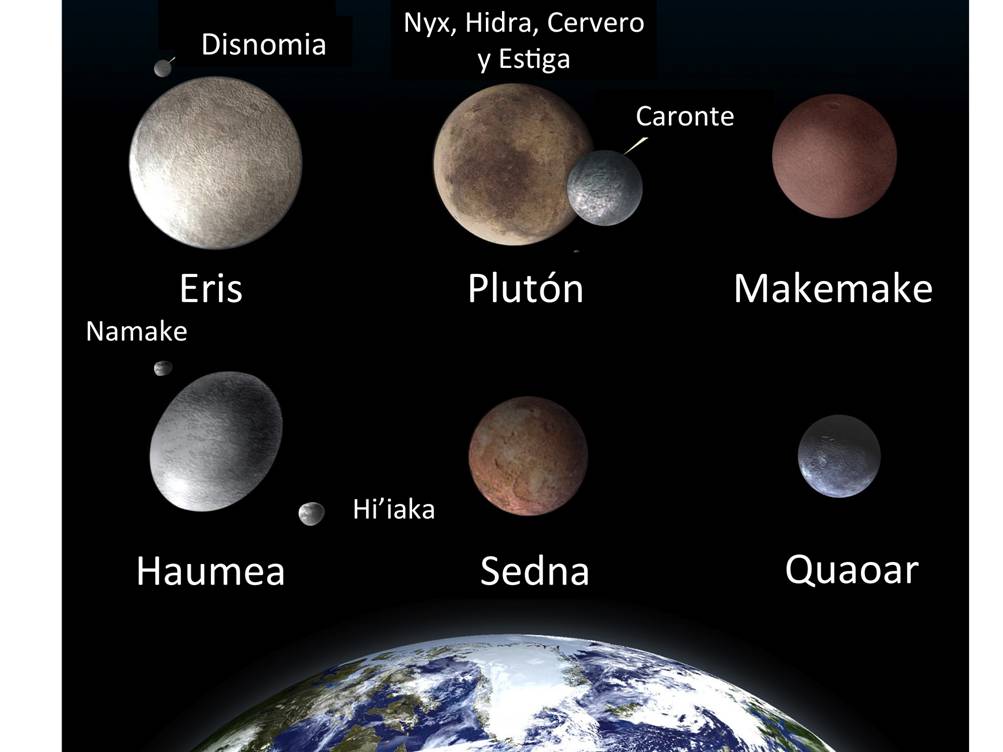On August 24, 2006, the International Astronomical Union (IAU), having evaluated proposals submitted at its plenary meeting, resolved to officially adopt definitions for planets and other bodies in the Solar System, according to which:
- A planet is an object: a) in orbit around the Sun, b) that has sufficient mass for its self-gravity to overcome rigid body forces so that it assumes a hydrostatic equilibrium (nearly round) shape, and (c) has cleared the neighborhood around its orbit.
- A dwarf planet is an object: a) in orbit around the Sun, b) that has sufficient mass for its self-gravity to overcome rigid body forces so that it assumes a hydrostatic equilibrium (nearly round) shape, c) that has not cleared the neighborhood around its orbit of other objects, d) is not a satellite of another planet.
- Any other objects, except satellites, must be called small Solar System bodies, including most trans-Neptunian objects.
Therefore, within the Solar System there are only eight planets (Mercury, Venus, Earth, Mars, Jupiter, Saturn, Uranus and Neptune). Pluto, Ceres and Eris (discovered in 2005, previously known as 2003 UB313 and the cause of the definition change) are now dwarf planets. Subsequently Haumea and Makemake were also included in this category. In particular, Pluto lost its status as a planet on account of several factors, including: its orbit, which is highly elliptical and outside the ecliptic plane; the presence of a companion, Caronte (discovered in 1978), with a size and mass of the same order of magnitude, and the company of a further four smaller-mass objects (Nix and Hidra, glimpsed for the first time in 2005; Cerbero, announced in 2011; and Estigia, seen one year later). Thus, Pluto fails to meet condition 2c of the official IAU definition.

Meanwhile, Pluto, Eris, Makemake and Haumea, found within the confines of the Solar System, belong to a new category of objects, plutoids, tens of which are expected to be identified over the next few years. There is another category that includes trans-Neptunian objects. These are objects that orbit the Sun at a greater distance than Neptune (technically, the semi-major axis of the TNO will be more distant than that of Neptune). More than 1,000 such objects have been identified in our planetary system, of very diverse sizes. Eris has a satellite, also discovered in 2005, called Disnomia, named after the daughter of the Greek goddess that lends her name to the dwarf planet. Haumea, named after the patron goddess of Hawaii, has two satellites, Hi’iaka and Namaka, who are the goddess’ daughters.
The more than 1,000 exoplanets that have been confirmed discovered since 1995 (and earlier if we include those orbiting neutron stars) are not subject to this definition. For these the IAU agreed a provisional definition in 2003, which many specialists found unsatisfactory and is subject to review. Thus, an exoplanet is an object that:
Orbits around a star or remnant of a star (white dwarf, neutron stars) and has a mass of less than 13 Jupiter masses. This means they cannot fuse deuterium, a hydrogen isotope, nor any other chemical element. Therefore, they do not produce energy from this source.

Substellar objects, with greater masses than exoplanets but less than approximately 8% of the mass of the Sun, are called brown dwarves. These are characterized by the absence of hydrogen fusion.
Isolated planetary mass objects (IPMOs, planemos, xebarcos, or orions), with a mass below the threshold of 13 Jupiter masses, must be referred to as sub-brown dwarfs or any other suitable name, except for that of planet.
This text is an updated summary of the book Visiones de Gaia: la Tierra desde el espacio, written by David Barrado and published by INTA (National Aerospace Technology Institute “Esteban Terradas”) in 2011. To access the complete book in Spanish, click here.
David Barrado Navascués
CAB, INTA-CSIC
European Space Astronomy Center (ESAC, Madrid)
Comments on this publication